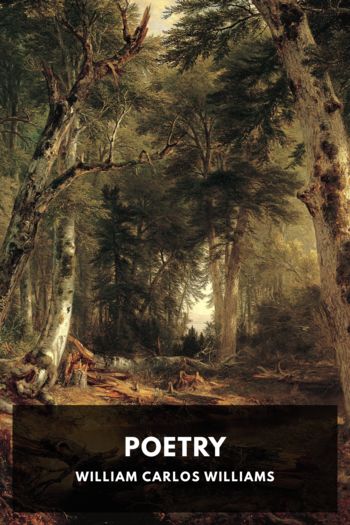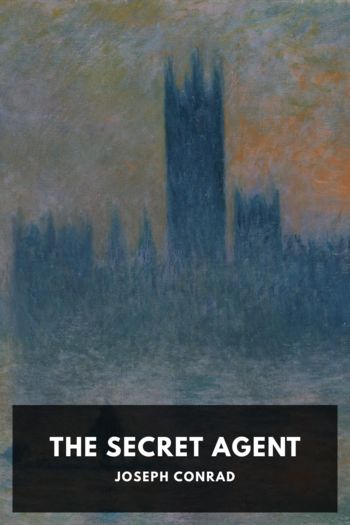Hidden History: Lost Civilizations, Secret Knowledge, and Ancient Mysteries, Brian Haughton [books you need to read .TXT] 📗

- Author: Brian Haughton
Book online «Hidden History: Lost Civilizations, Secret Knowledge, and Ancient Mysteries, Brian Haughton [books you need to read .TXT] 📗». Author Brian Haughton
have become household names. The enduring appeal of the gallant medievel outlaw, who steals from the rich to give to the poor and fights against the injustice and tyranny of authority figures such as Prince John and the evil sheriff of Nottingham, shows no signs of waning. But where does the story originate? Was there a real Robin Hood hiding in the forests of medieval England ready to defend the rights of the poor and the oppressed?
Our earliest written refererence to the outlaw, though it amounts to a mere scrap, is in William Langland's Piers Plowman written in 1377, where one of the characters states "I know the rhymes of Robin Hood." The next notice, and the first where Robin is classed as an outlaw, is in Andrew de Wyntoun's Original Chronicle of Scotland, written around 1420. Under an entry for the year 1283, the chronicle describes Robin Hood and Little John as well-known forest outlaws in Barnsdale, Yorkshire, in the north of England. Almost 20 years later, in the Scotichronicon, Walter Bower mentions Robin Hood, "the famous cutthroat" and Little John, in an entry under the year 1266. Bower puts the outlaws in the context of Simon de Montfort's rebellion against Henry III, and again places them in Barnsdale Forest, north of their traditional home in Sherwood Forest, Nottinghamshire. However, at this time the forests of England covered a much wider area than they do today, and as Nottinghamshire and Yorkshire are adjacent counties, it is possible that Robin Hood's adventures spread over both forests.
The remaining early references to Robin Hood are from ballads and songs, designed to be recited or sung by wandering minstrels. The most significant early account in ballad form is A Gest of Robin Hood, (gest probably meaning deeds), of which there were a number of editions printed after 1500, following the development of the printing press in England by
William Caxton. The story in the Gest, again set in the forest of Barnsdale, was once thought by some to date back much earlier than the printed editions, perhaps as early as 1360 or 1400, but nowadays a date of around 1450 is more widely accepted. By the time of these ballads, some of the elements of the Robin Hood story as we know it today were in place. Robin is accompanied not only by Little John, but Will Scarlet, and Much the Miller's Son. His enemies include the rich abbots of the Catholic Church (whom he robs), and the sheriff of Nottingham, and it is at this time that we first see the appearance of the archery contest set up by the sheriff to trap the outlaw. Robin sees off his enemies, he beheads both the sheriff of Nottingham and the bounty hunter Guy of Gisborne. For the murder of the sheriff, he is hunted down in Sherwood Forest by King Edward himself, but pledges his allegiance and is pardoned. Robin subsequently finds service at the court of the king, but becomes bored and restless with his position and returns to the forest where he again lives as an outlaw. Many years later he falls ill and journeys to visits his cousin, the prioress of Kirklees Abbey, for medical treatment. But unbeknownst to him, she is the lover of Robin's enemy Sir Roger of Doncaster, and lets him bleed to death. Before he dies, Robin shoots his last arrow out of the window and tells Little John to bury him where the arrow falls.
At this stage, however, there are still some popular aspects of the tale missing. The Normans are not yet portrayed as the villains, and there is no fight against an evil Prince John, or friendship with his benevolent brother, King Richard the Lionheart. It was not until Sir Walter Scott's Ivanhoe in 1819 that Robin Hood as the Englishman fighting the Norman oppressor was established. Scott's novel also made the character of Friar Tuck a much more important part of the story. In contrast to later plays and stories where he is cast as a nobleman, in the early ballads Robin is seen as a yeoman (a tradesman or farmer), and there is no mention of him giving to the poor. It was not until 1598, in a play intended for an aristocratic audience, that Robin's status was elevated to become Robert, the Earl of Huntingdon. It is also in the late 16th century that the romance with Maid Marion is first established, possibly in plays written for the May Games, spring celebrations which took place in early May. But Maid Marion did not become a main character until the publication of Thomas Love Peacock's novel, Maid Marian, in 1822. She had, however, been connected with the tale since around 1500.
The Major Oak, an 800- to 1,000-year-old oak tree in Sherwood Forest, Nottinghamshire, reputedly a hideout of Robin Hood.
Whether there is an historical figure behind these ballads, stories, and plays, is another matter, though there are certainly many candidates for the historical Robin Hood. Unfortunately, 13th and 14th century English records contain many references to people with the surname Hood, and as Robert and its alternative form of Robin was also a fairly common Christian name at the time, finding the Robin Hood of legend is extremely difficult. There are, however, a few possibilities. At the York assizes (county court) of 1226, a Yorkshireman named Robert Hod is recorded as a fugitive, and in 1227 he appears again under the nickname Hobbehod, the meaning of which is unclear. Unfortunately nothing more is known of this Robert Hod. Another possibility is Robert Hood, son of Adam Hood, a forester who worked for John De Warenne, the Earl of Surrey. He was born in 1280 and lived in Wakefield, Yorkshire, as a tenant, with his wife Matilda. Wakefield is only 10 miles from Barnsdale, the setting





Comments (0)